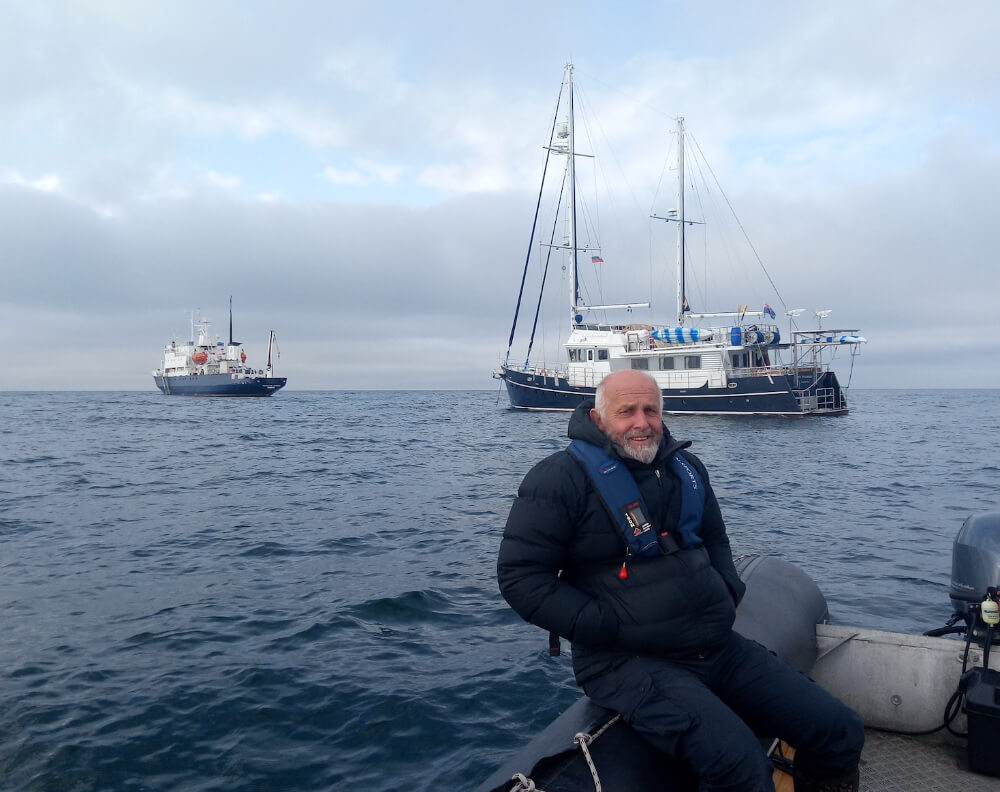The author with the MV Strannik behind.
RUSSIA WITH LOVE
In part two on the voyage of the MV Strannik , Rodney Russ takes us along the Russian far east coast from Petropavlovsk-Kamchatskiy to Anadyr.
Images by O.Belonovich, Lisle Gwynn
I once read that “Russia was a place where nothing was allowed but everything was possible”. Perhaps that is what attracted me to it in the first place, or maybe it was its history.
Bering, Cook and La Perouse had all come this way and been infatuated with the Pacific coast of the Russian Far East. Their accounts littered my library with a persistency that could not be ignored.
As a biologist, who had spent a lot of my time working in the higher latitudes of the southern hemisphere I was fascinated by arctic fauna and flora. I was particularly keen to see the megafauna like polar bears, walrus, sea lions and the cetaceans as well as the migratory wading birds like the spoon-billed sandpiper. From New Zealand, I had watched our sooty shearwaters (Puffinus griseus) depart each autumn for the Bering Sea and then return in the spring. If they could do it why couldn’t I?
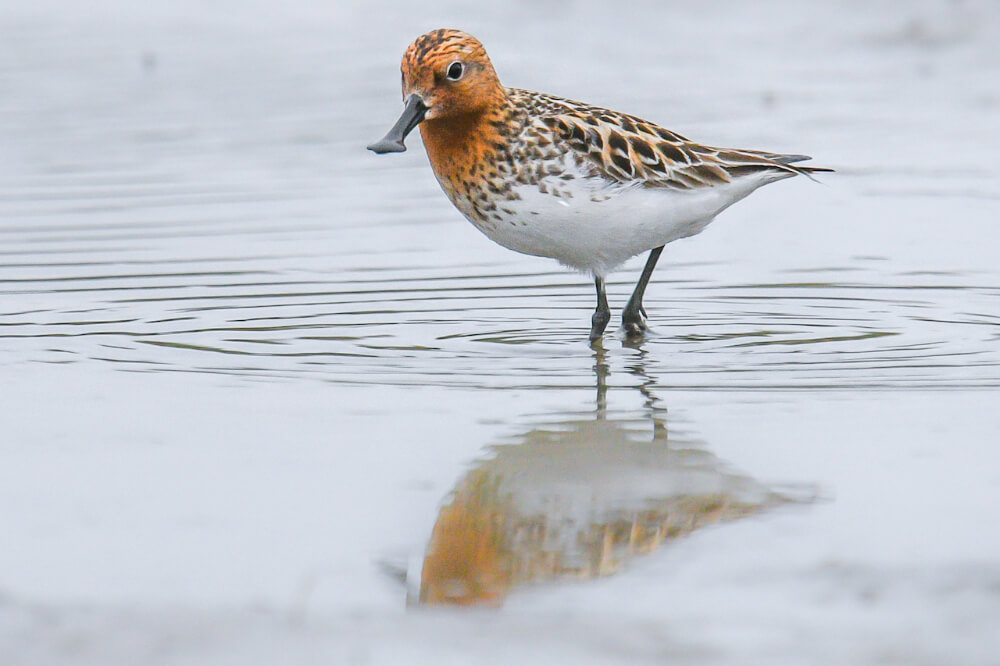
A RUSSIAN AFFAIR
My “affair” with Russia began in 1993. Following the collapse of the Soviet Union, I was offered the opportunity to charter a Russian ice-strengthened polar research vessel for expedition cruising. The Russian research institutes were bankrupt and were looking to earn money from chartering their vessels. I took up the offer and operated this vessel and a sister ship for over 25 years. My company offered commercial expeditions to Antarctica, the Sub Antarctic Islands, the Western Pacific and in 2006 became one of the first companies to offer commercial expeditions in the Russian Far East. These expeditions included the Kuril Islands, the Sea Okhotsk, Kamchatka Peninsula, Chukotka and the NE Passage. I passed ownership and management of this business to my sons in 2018.
It was against this background that I was determined to make a series of private expeditions in the Russian Far East. My yacht “Strannik” (Russian for pilgrim or wanderer) was finally ready in August 2019 (see issue …. ) and I had been asked if we could pick up a British film crew who had been filming polar bears and walruses on Wrangel Island. I didn’t need another excuse.
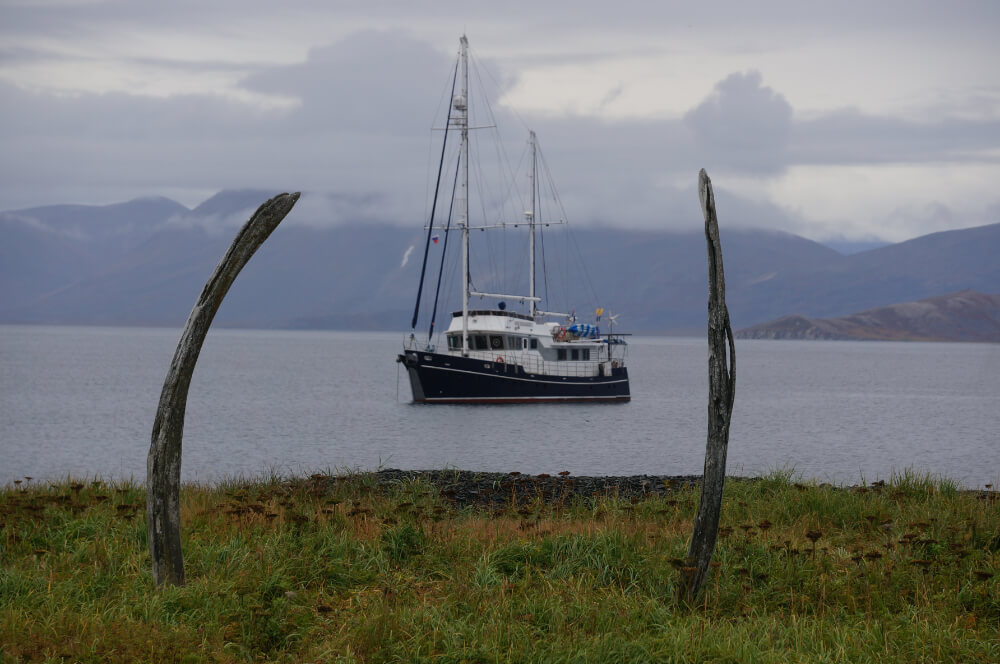
When the iron curtain came down after the second world war the Russian Far East, because of its proximity to the USA, was declared a closed area. Even Russian residents had to get special permits to enter certain areas. Border Guard and military bases were constructed at strategic places along the coast and military vessels patrolled the adjacent seas. These bases and patrols collapsed along with the Soviet Union in 1993, there was simply no money to support them. However, by 2006 new protocols to manage the area were starting to emerge and these had been slowly refined and enforced.
PERMITS FIRST
To undertake a private expedition, such as I proposed, I needed a permit, and it wasn’t something I could organise myself. I used the services of a Kamchatka-based travel company to help me prepare the application. Firstly, I had to prepare a sailing schedule showing my intended route, it had to include all scheduled border crossings, that is, any time I planned to cross the 12nm territorial sea border. The estimated time and latitude and longitude of these crossings had to be included as did the location of any planned landings. This application had to be submitted to the Ministry of Tourism in Moscow who sought comment from all potentially interested parties including, the Military, Federal Security Bureau, Ministry of Natural Resources, Ministry of Fisheries and the Border Guard Service.
The Ministry of Tourism in Moscow then collated these various agencies’ comments and conditions and returned them to our agent in PK. Our agent then worked with the local Border Guard office who issued our permits and clarified the conditions of entry. My permit was granted on the condition that the vessel’s position would be electronically monitored by Moscow and we agreed to advise the Border Guards by email and phone every time we crossed the border. There is a cost to all of this but it was worth every rouble.
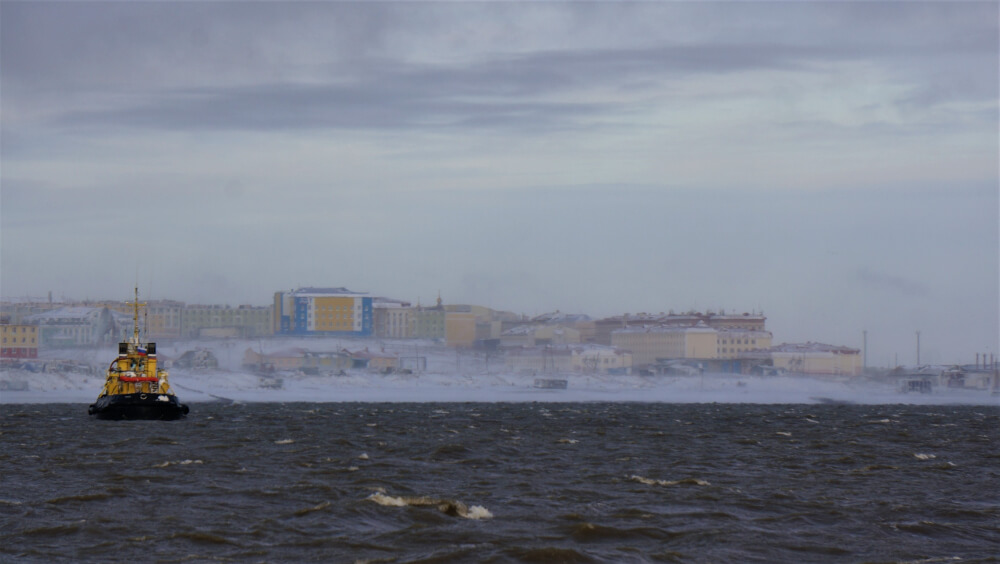
The crew consisted of myself, an engineer, deckhand and a translator. The latter was essential both for officialdom and for our landings. Sadly, my affair with Russia hadn’t included learning the language much to my disappointment. My partner Olga joined us for the first leg of the journey to Anadyr and then another Olga who had helped me with translations on a recent snowmobile expedition in Chukotka joined us for the remainder of the expedition.
PETROPAVLOVSK-KAMCHATSKIY
We arrived at Petropavlovsk-Kamchatskiy from Pusan on August 7th and were lucky to be able to come straight in. The port is closed whenever there are military shipping movements. These closures can last from several hours to several days. Opening borders here was fairly standard and went smoothly. We spent a couple of weeks here tied up alongside near the outfall from a fish processing factory, but then berths for visiting yachts are rare, visiting yachts are even rarer.
The port has been described as one of the greatest natural harbours in the world. It was from here that Vitus Bering sailed on his Great Northern Expedition of 1741 to Alaska, Capt James Cook 3rd Expedition called here in 1779 as did La Parouse in 1787, it was the place to visit.
We visited with friends, climbed volcanos and soaked in the thermal hot pools, for which the area is renowned, before stocking up on food, including both air-dried and fresh Kamchatka salmon. We departed Petropavlovsk-Kamchatskiy on Monday 19th August and as it was classed as a domestic voyage, we only needed to get port clearance and advise the Border Guards of our departure.
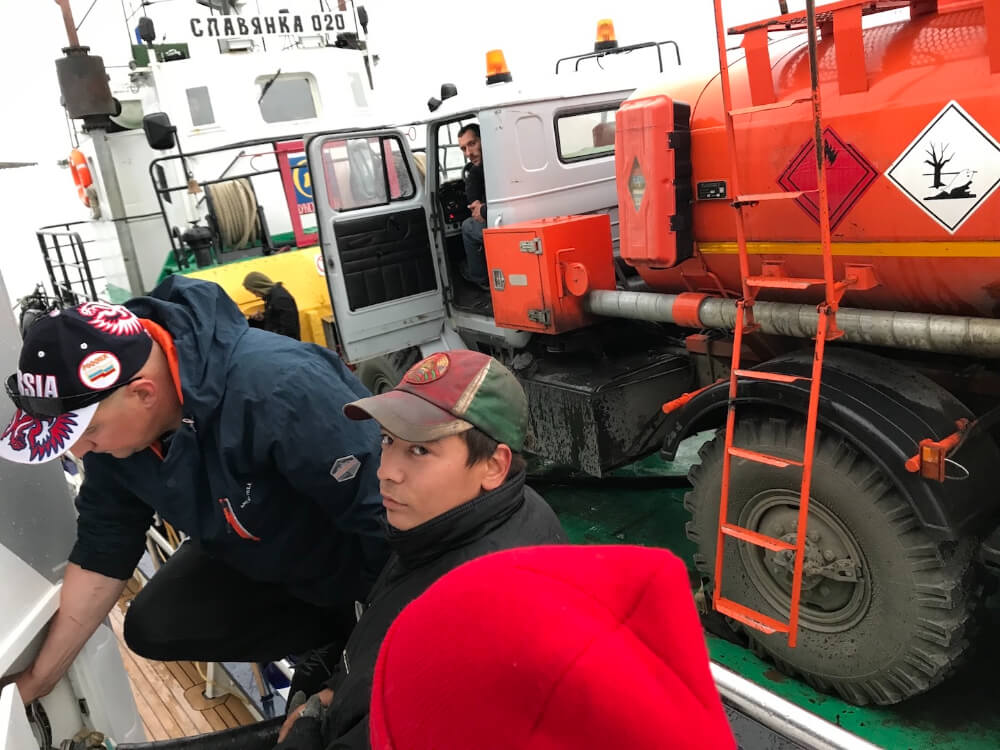
We were finally underway. Our first planned stop at Olga Bay had to be aborted because of a big swell on the beach. On previous visits, I had had great Kamchatka Brown Bear encounters here. Our next stop was Karaga Bay which gave us access to two villages that I hadn’t been to previously Karaga and nearby Ossora. There are only a few hundred people in each of these villages, they are remnants of a larger population that lived here under the Soviet regime. A Border Guard patrol vessel came alongside and checked all our papers while we were anchored here.
TIME HAS FORGOTTEN
Our next stop was the village of ll’pyrskiy on the Milyutynyn Spit. It is a village that time has forgotten, less than 100 people live here and almost all are employed in a local fish processing factory. We caught up on the local gossip in the general store. We sailed from here across the Gulf of Korf to the village of Tilchiki. In April 2006 a magnitude 7.6 earthquake destroyed this village. It has subsequently been rebuilt on a nearby site. It is the administrative centre for the Koryakskiy Nature Reserve and we planned several days within the Park. But first a special encounter. We were in contact with one of my former ships now operated by my sons. We rendezvoused with them near the southern tip of the Goven Peninsula and spent an enjoyable hour catching up with crew and friends.
On the eastern coast of the Goven Peninsula and within the Koryakskiy Nature Reserve are three of the most stunningly beautiful fiords, two of which were accessible by Strannik the third and perhaps the most beautiful is Tintikun Lagoon, which is only accessible by zodiac. The weather wasn’t suitable for anchoring off Tintikun so we visited the other two Yuzhnaya Glubokaya and Lavrov Bay.
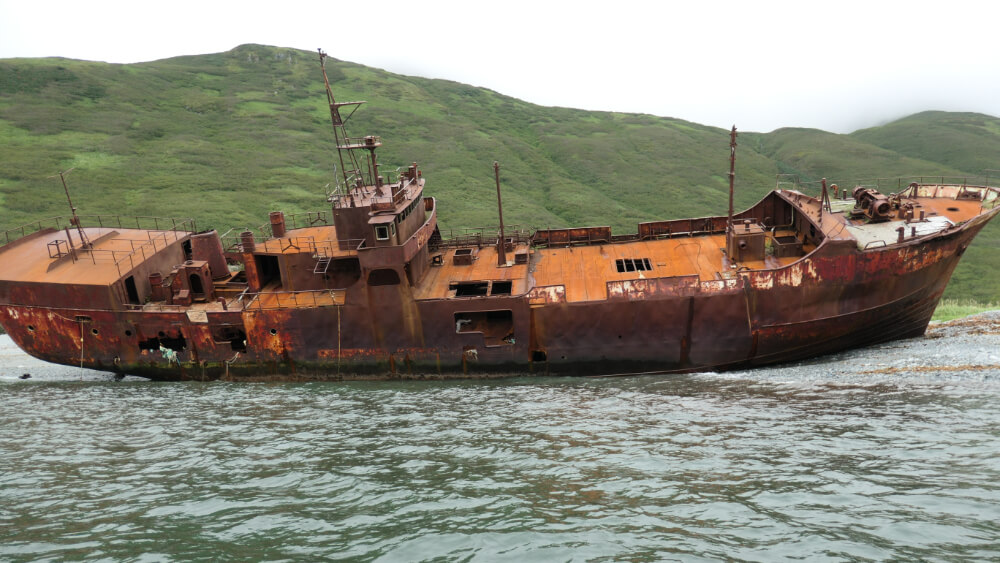
Just inside the entrance to Lavora Bay a large fishing vessel lies wrecked on some rocks, testimony to the inclement weather which buffets this region, especially in the winter. The anchorage in the north arm of Lavora is very secure. We spent time exploring the remains of the abandoned herring fish factories. This region had a large herring fishery but it was overfished and collapsed and the factories lie in ruins.
SPECTACULAR BAYS
From Cape Olyutorskiy to Cape Rubikon, which is the border between the Kamchatka and Chukotka Districts is 170 miles and there are no fewer than 18 spectacular bays or fiords, not all are accessible by vessels our size but those that aren’t can often be accessed at high tide by Zodiac. There are no permanent settlements along this coast, just a couple of seasonal fishing camps and abandoned metrological stations and Border Guard bases. During the summer months, brigades of reindeer herders can often be found in the valleys tending their herds.
We visited just four of these fiords, time did not allow us to do more. In Ekspeditsiya Bay we visited an abandoned metrological base. Glubokaya Bay is a historic anchorage and on a small headland in the fiord, there is a very small poignant cemetery with several graves of crew from the Soviet whaling ships that worked this coast and sheltered here in times of bad weather. In Nataliya Bay, there are the remains of a Border Guard base that was manned until the collapse of the Soviet Union in 1993.
We sought shelter in Bukta Pavel (Bay of Paul), one of two bays draining into Bukta Nataliya the other one is Bukta Petra (Bay of Peter). These bays were named after Vitus Bering’s two ships (St Peter and St Paul) used on the Great Northern Expedition to Alaska.
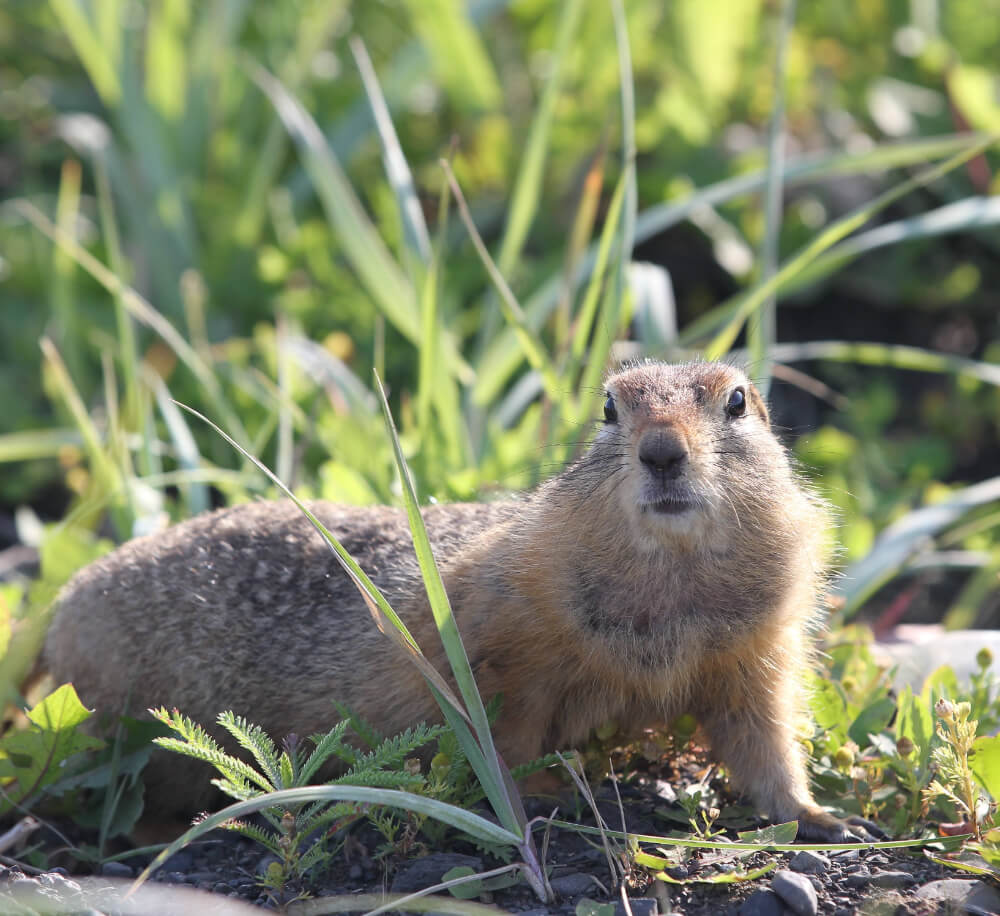
We had hoped that the weather would allow us to anchor off the small village of Meynypil’gyno and take the Zodiac across the bar to meet friends that were working on the Spoon-billed Sandpiper (Calidris pygmaea) arguably one of the world’s rarest migratory waders. It breeds only in Chukotka but winters over in Asia. Reclamation, industrial development and hunting in the wintering grounds are threatening the survival of this species. Sadly, for us, the weather wasn’t suitable and we sailed past and around Cape Navarin and into the Bering Sea to Anadyr. The Beringia land bridge that once connected Asia and the Americas during the last ice age started near this Cape.
The town of Anadyr is situated on the banks of the Anadyr River, it is the administrative centre of the Chukotka Autonomous Okrug and is the easternmost town in Russia. The region which is the most sparsely settled in Russian has huge reserves of oil, natural gas, coal and gold which are slowly being exploited. The Russian Oligarch Roman Abramovich was the Governor of Chukotka from 2001-2008. We were exempt from pilotage because of our size. Much of the 30-mile-long river channel is shallow and it shifts from year to year so the harbourmaster would normally insist on pilotage.
On arrival were directed to anchor in the river just off the town. Friendships forged over many years of visiting the town with my Russian vessels and for private snowmobiling expeditions proved invaluable for arranging clearance, stores and refueling. Refueling was done by a tanker that was driven onto a barge which then tied alongside us. We said farewell to Olga and welcomed a new Olga as a translator, stocked up on food and prepared to depart for Wrangel Island a journey that would take us through the Bering Strait and into the Chukchi Sea. But that’s another story.


